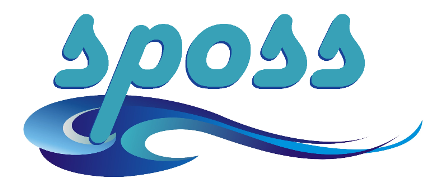SPECIAL PURPOSE OPEN-SOURCE SOFTWARE for the OFFSHORE INDUSTRY
To achieve more with less resource, the oil and gas sector must look at new collaboration models. Open Innovation through Open-Source software development might become a cost-effective research and development model for the offshore industry. Open source software is by definition the software for which users have access to the source code and is distributed at no cost with limited restrictions on how it can be used.
In the menu on the right you can check the codes available and the ongoing initiaves .
Specific market issues:
The offshore industry heavily depends on either internally developed systems or commercially purchased systems that have been mostly closed source and proprietary, such as, i) global dynamic analysis tools; ii) vortex induced vibration (VIV) tools; iii) complex local cross section analysis tools; iv) wave interaction with floating units and offshore structures; just to mention a few.
Fundamental issues:
- The knowledge developed during university research is mainly disseminated through reports and papers;
- The codes and subroutines developed to achieve those results are usually neglected and not made public available at the end of the work;
- This leads to an ineffective scheme where reproducing a previous research can be time consuming and frustrating.
Open-source advantages:
Some of the advantages are described below:
- Users can use the software without cost and for any purpose they wish;
- Follow-up a previous research and further extend it is easier;
- As a large number of programmers/specialists can apply and work on the code without asking permission from original authors, open source software is usually generally fixed, updated and maintained quickly
One of the main benefits for the industry is that, besides the usually internal knowledge employed in the development of proprietary software, external sources of knowledge can be incorporated in a much broader sense. This may include, (a) know-how from suppliers, end-users and customers, (b) university, government and private research institutes. From the individual point of view, the contributors motivation may vary from direct utility (to the individual or to employer), benefit from learning a new skill and gain respect from other researchers or the interest from prospective employers.
Our motivations:
- INOCEANO understand that the collaborative development of such technologies may benefit the industry and the society as a whole;
- Promote and join efforts on open-source development for offshore industry specific applications;
- Provide a platform for researcher collaboration and code description.
Useful references:
More general information can be found in references, such as:
- Open Innovation: Researching a New Paradigm Oxford University Press, 2006, Edited by Henry Chesbrough, Wim Vanhaverbeke and Joel West
- Open source initiative at http://opensource.org is a global non-profit focused on promoting and protecting open source software, development and communities.
- Opensource.com is an online publication focused on how open source is applied to different areas including business, education, government, health, law and other disciplines of life.
A large number of open source code, that can be employed in our special purpose applications, has been previously implemented. To the extent possible, INOCEANO will make use of what is available out there. Useful open source finite element routines implemented in Python can be, for example, downloaded in the links below:
- Non-linear finite element analysis of solids and structures 2nd Edition, Rene de Borst, Mike Criefield, Joris Remmers, Clemens Verhoosel
- SfePy: Simple Finite Elements in Python
About us:
SPOSS is a initiative of INOCEANO.
"Given enough eyeballs, all bugs are shallow."
